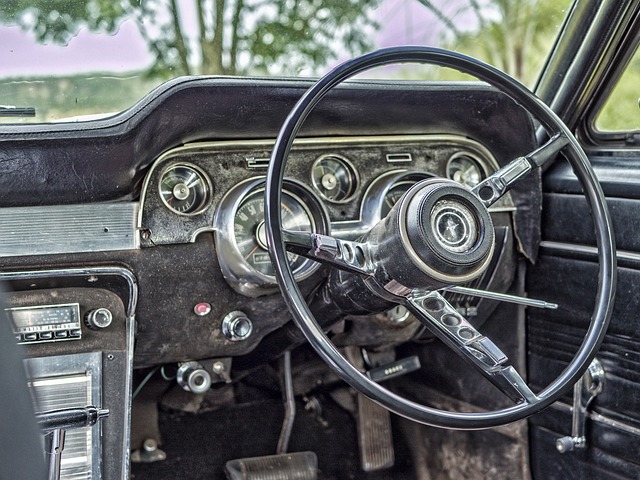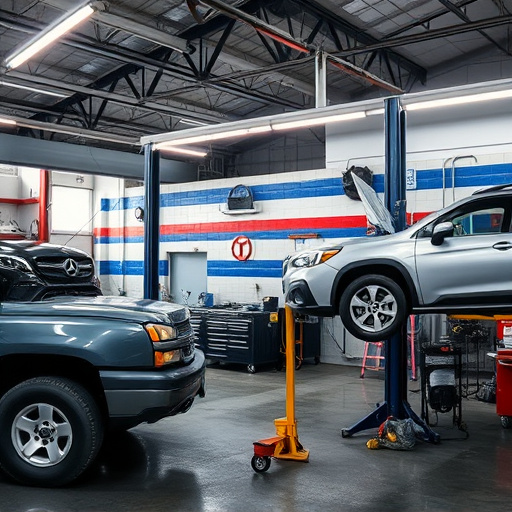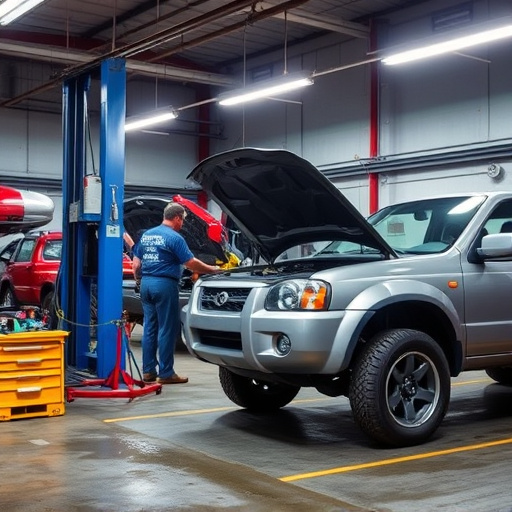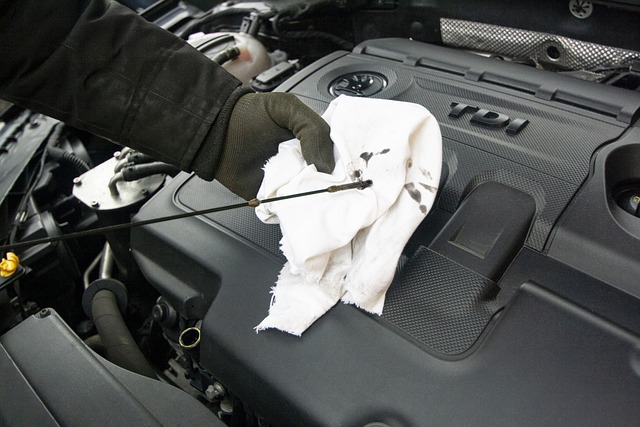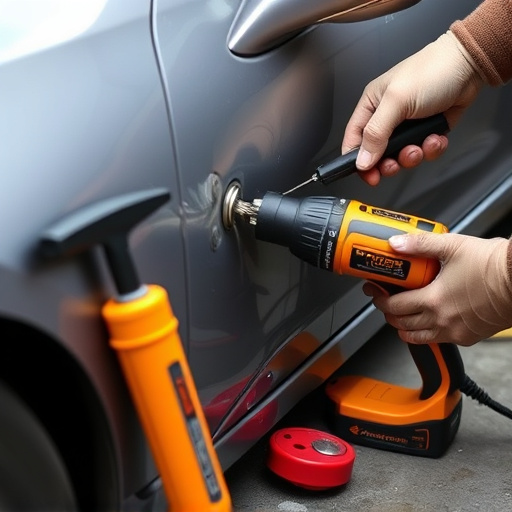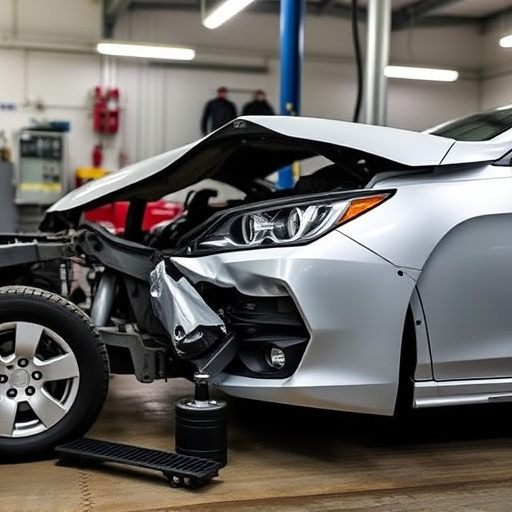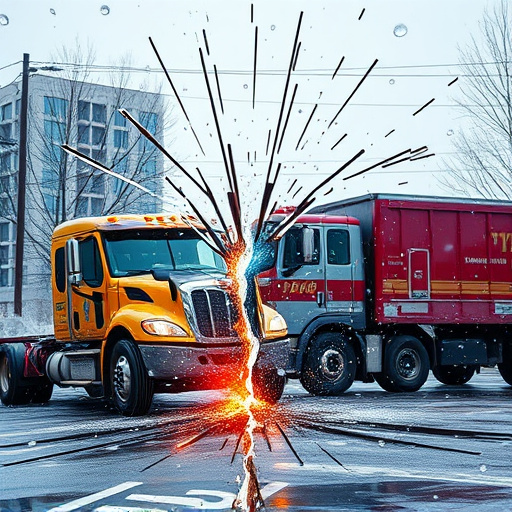Tesla repair procedures require specialized knowledge and equipment due to advanced electric powertrains and innovative features. The process starts with diagnostic tools connecting to the onboard computer, followed by precise steps for components like battery systems, motors, and ADAS. Software system reprogramming is crucial for optimal performance. Diagnosing issues efficiently leverages advanced tools for quick identification, with solutions ranging from software updates to hardware replacements. Specialized techniques ensure durable and precise repairs for complex challenges.
Tesla vehicles, renowned for their cutting-edge technology, require a unique approach to maintenance. This article serves as your definitive guide to navigating Tesla repair procedures and software system reprogramming. From understanding the intricate aspects of vehicle diagnostics to mastering efficient troubleshooting techniques, we offer a comprehensive toolkit for professionals and enthusiasts alike. Uncover the secrets to optimal performance by following these detailed steps, ensuring your Tesla remains at the forefront of automotive innovation.
- Understanding Tesla Repair Procedures: A Comprehensive Guide
- Software System Reprogramming: Steps for Optimal Performance
- Diagnosing and Resolving Common Tesla Issues Effectively
Understanding Tesla Repair Procedures: A Comprehensive Guide
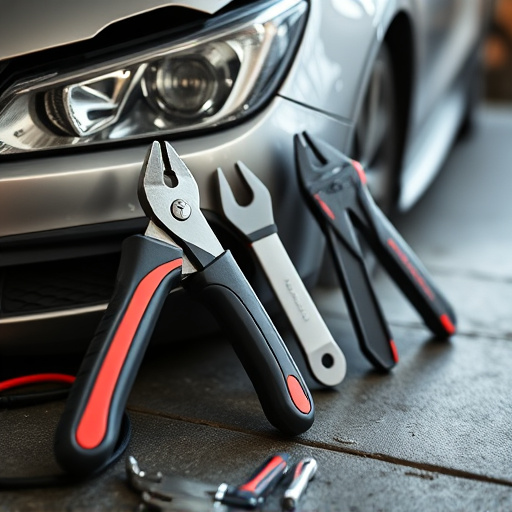
Understanding Tesla Repair Procedures: A Comprehensive Guide
When it comes to Tesla repair procedures, understanding the intricate processes and advanced technologies involved is paramount. Tesla vehicles are renowned for their innovative features and electric powertrains, which necessitate specialized knowledge and equipment for effective repairs. The first step in any Tesla repair involves a thorough inspection to diagnose the issue accurately. This includes utilizing diagnostic tools that connect to the vehicle’s onboard computer, similar to procedures followed in Mercedes Benz repair, to retrieve error codes and performance data.
Once the problem is identified, technicians can proceed with precise steps tailored to various components, from battery systems and motors to advanced driver-assistance systems (ADAS). For instance, frame straightening might be required after an accident, while auto painting is often needed for aesthetic restoration. Each procedure follows stringent quality standards to ensure the vehicle’s safety, performance, and reliability, reflecting Tesla’s commitment to excellence in its repair processes.
Software System Reprogramming: Steps for Optimal Performance

Software System Reprogramming plays a pivotal role in achieving optimal performance during Tesla repair procedures. It involves meticulous steps to ensure the vehicle’s computer systems function seamlessly and accurately. The process begins with accessing the onboard diagnostic system, which allows technicians to identify any faults or discrepancies in the software. Using specialized tools, they can then rewrite or update the programming, addressing issues related to engine management, transmission control, and even advanced driver-assistance systems (ADAS).
This meticulous reprogramming is akin to fine-tuning a high-performance engine. For instance, in classic car restoration or vehicle paint repair cases, where originality is paramount, precise software adjustments can revive the car’s performance without compromising its historical integrity. Car bodywork services benefit greatly from this process as it ensures every component works in harmony, enhancing overall driving experience and safety.
Diagnosing and Resolving Common Tesla Issues Effectively

Diagnosing and resolving common Tesla issues efficiently requires a systematic approach. Start by utilizing the vehicle’s advanced diagnostic tools, which provide real-time data on various systems. This enables mechanics to pinpoint problematic areas swiftly. For instance, Tesla’s software system can be reprogrammed to fix performance glitches or update infotainment features.
An auto body shop specializing in Tesla repair procedures should have state-of-the-art equipment and a thorough understanding of the vehicle’s unique construction. Common issues like battery problems, motor control errors, or sensor malfunctions can often be resolved through software updates or hardware replacements. Some challenges, such as those involving auto painting or Mercedes Benz collision repair techniques, might demand more specialized knowledge and tools to ensure precise and durable solutions.
In conclusion, mastering Tesla repair procedures and software system reprogramming is key to ensuring these innovative electric vehicles reach their full potential. By understanding the comprehensive guide provided and implementing the steps for optimal performance, mechanics can effectively diagnose and resolve common issues. This not only enhances customer satisfaction but also contributes to the sustainable future of automotive technology.




